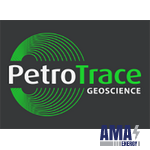Deep Processing
Building the original speed model
The adequacy of the initial deep-speed model largely determines the quality and timing of the depth migration. To build the initial velocity model, PetroTrace employees use a combination of the results of vertical and horizontal velocity analyzes, well data, as well as all available a priori information. Years of experience with complex topology of boundaries allows us to effectively model such structural elements as salt baths, intrusive bodies and overthrusts.
Speed model refinement
Since the result of depth migration is highly dependent on the quality of the velocity model, the migrated depth seismograms provide optimal data for updating the velocities. PetroTrace processors use innovative interactive and automatic procedures for analyzing and diving residual kinematic shifts on migrated deep seismograms. The volumes of residual kinematics are used to refine the depth-velocity model, both with the help of velocity inversion with boundary conditions (Constrained Velocity Inversion), and thanks to layer-by-layer and grid tomography.
Migration Algorithms
Features of the seismic and geological conditions of a particular area of work and field observation parameters dictate the choice of the optimal migration algorithm to solve the geological problems that can be met even in the extremely short deadlines of the project. PetroTrace specialists have in their arsenal a full range of migration transformation technologies based on both ray tracing and the solution of the wave equation. Extensive experience in applying a variety of migration algorithms allows us to choose and recommend the most effective solution for optimal imaging of the environment in a particular geological environment.
Anisotropy accounting
Velocity anisotropy can significantly affect the focus and positioning of migrated reflections. PetroTrace processors carry out projects that include the analysis of Thomsen's anisotropic parameters, the construction of volumes of these parameters and the use of anisotropy information in migration transformations. The results of migration, taking into account anisotropy, have a higher resolution, can improve the accuracy of binding to well data and increase the reliability of the forecast of reservoir properties.
Isolation of the scattered component of a seismic field
Information on the location of low-amplitude disturbances, cracks, karsts, and other small-sized environmental elements can play a key role in the successful development of oil and gas fields. Traditional methods for localizing such elements are based on the calculation of coherence, curvature, and other attributes after standard processing of seismic data. The purpose of standard processing is to obtain an optimal image of extended reflecting boundaries. Small sized elements of the environment can be ignored or completely lost in the process of traditional processing. Meanwhile, these objects are diffractors that cause scattering of seismic waves.
An example of a deep cube with a superimposed scattered component
The scattered component of the seismic field carries much less energy than the reflected component and requires special technology for its efficient separation. PetroTrace developed and implemented its own method for extracting the scattered component based on the 3D Radon transform, which allows one to successfully separate reflections and diffraction from deep migrated seismograms in the region of tilt angles. The cube of the scattered component, obtained as a result of special adaptive data processing before summation, helps to more confidently localize low-amplitude disturbances, cracks, karsts and other small-sized elements of the medium. Isolation and mapping of these elements allows you to clarify the interpretation, increase the reliability of the construction of geological / hydrodynamic models and make more informed decisions about the planning of new wells.

